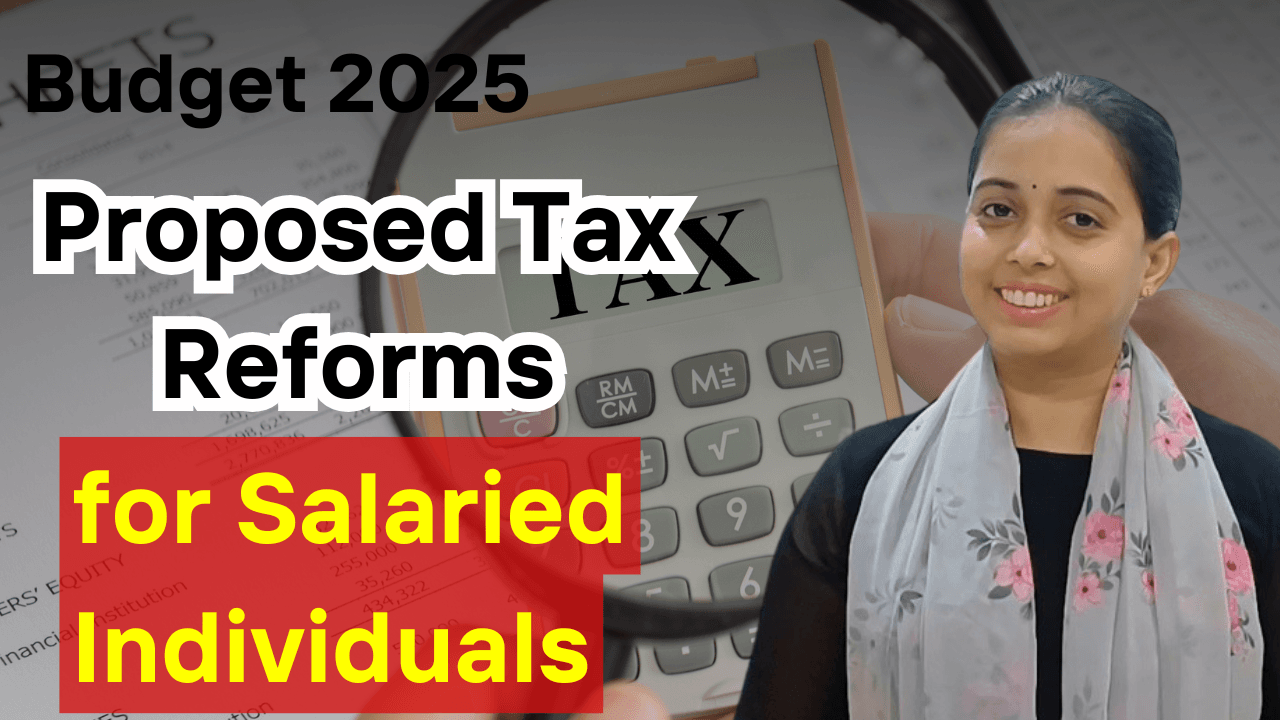Proposed Tax Reforms for Salaried Individuals
As the Union Budget 2025-26 approaches, expectations are running high among India’s salaried class. Proposed Tax Reforms for Salaried Individuals On February 1st, Finance Minister Nirmala Sitharaman will unveil the government’s financial roadmap for the year. One of the critical areas of focus is tax reforms, particularly those aimed at easing the financial strain on salaried employees. But what changes can they realistically hope for? Let’s explore what economists are proposing and the broader implications for the middle class.
The Current Scenario: Taxation for Salaried Individuals
Under the existing tax framework, the exemption limit for income tax is set at ₹3 lakh, while the standard deduction stands at ₹75,000. These figures were revised in the last budget, with the standard deduction seeing an increase from ₹50,000 to ₹75,000. Proposed Tax Reforms for Salaried Individuals While these measures provided some relief, many feel they fall short of addressing the mounting financial challenges faced by the middle class, especially in the context of rising inflation and stagnant wage growth.
The government’s introduction of the new tax regime aimed to simplify taxation by reducing rates and eliminating multiple deductions. However, the old tax regime, which allows for various deductions like HRA and Section 80C benefits, remains an option for taxpayers who prefer leveraging these benefits despite higher rates.
Economists’ Proposals for Budget 2025
1. Higher Exemption Limit and Increased Standard Deduction
Economists are advocating for raising the tax exemption limit under the new tax regime beyond the current ₹3 lakh. Proposed Tax Reforms for Salaried Individuals A higher threshold would ensure that more low-income earners are exempted from paying taxes, leaving them with more disposable income.
Similarly, increasing the standard deduction beyond the existing ₹75,000 is seen as another crucial step. Proposed Tax Reforms for Salaried Individuals This would directly reduce taxable income for salaried individuals, offering much-needed relief to the middle class.
Deepika Mathur, Executive Director at Deloitte India, has pointed out that any tax relief in the upcoming budget is likely to focus on the new tax regime. She does not anticipate changes to the old tax regime, which, while offering deductions, comes with higher tax rates.
2. Addressing the Tax Burden on Salaries
Salaried individuals in India often bear a disproportionately high tax burden compared to other forms of income. As Sanchita Mukherji, Senior Business Economist and Managing Partner at Talk The Walk, explains, salary income is subject to multiple layers of taxation. Individuals are taxed on their income, their post-tax spending (via indirect taxes like GST), and even their investments (through capital gains tax). This triple taxation leaves the middle class with limited financial flexibility.
Reducing the tax burden on salaries by increasing exemptions and deductions could be a game-changer for this demographic, providing them with greater purchasing power and a sense of financial security.
3. Incentives for Electric Vehicles (EVs)
The push for sustainable living has led to an increase in demand for electric vehicles. Economists suggest enhancing tax benefits for EV buyers under Sections like 80EEB to encourage adoption. This move would not only promote green energy but also provide tax savings for environmentally conscious consumers.
4. Boosting the Housing Sector
The housing sector has always been a cornerstone of economic growth. Economists are calling for additional tax incentives for homebuyers, such as higher interest deductions on home loans. These measures would stimulate demand in the real estate sector, create jobs, and boost overall economic activity.
5. Simplifying Tax Processes for NRIs
Currently, tax payments in India must be made through an Indian bank account, posing a challenge for foreign nationals, NRIs, and Indians working overseas. Economists propose allowing tax payments from overseas accounts to simplify compliance for these groups. Additionally, smoother processes for NRIs to buy and sell real estate in India could attract more investment from this segment.
Impact of Inflation on the Middle Class
Inflation has eroded the purchasing power of the middle class, making it harder for families to manage their finances. By increasing the exemption limit and standard deduction, the government could counter the adverse effects of inflation, leaving individuals with more disposable income to spend and save. This would also stimulate demand, benefiting the broader economy.
Challenges and Expectations
While the proposals are well-meaning, the government faces the challenge of balancing tax relief with fiscal responsibility. Expanding exemptions and deductions could reduce revenue collection, potentially impacting critical infrastructure and welfare projects. However, targeted reforms for the salaried class could yield long-term benefits by increasing consumer spending and driving economic growth.
Conclusion: Will 2025 Be a Turning Point for the Salaried Class?
The Union Budget 2025-26 presents an opportunity for the government to address the long-standing concerns of salaried taxpayers. By adopting measures such as higher exemption limits, increased standard deductions, and simplified processes for NRIs, the government could provide significant relief to the middle class. Additionally, incentives for EVs and the housing sector would further support economic growth.
As the nation waits with bated breath, it remains to be seen whether the upcoming budget will deliver on these expectations or leave the middle class hoping for more. One thing is certain: the spotlight is firmly on the salaried class and their financial well-being.
Sources link – https://shorturl.at/Yjm4y
For More Information : https://taxgyany.com/

